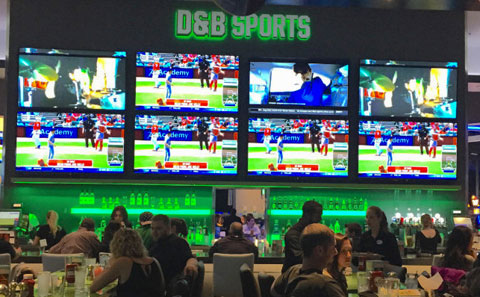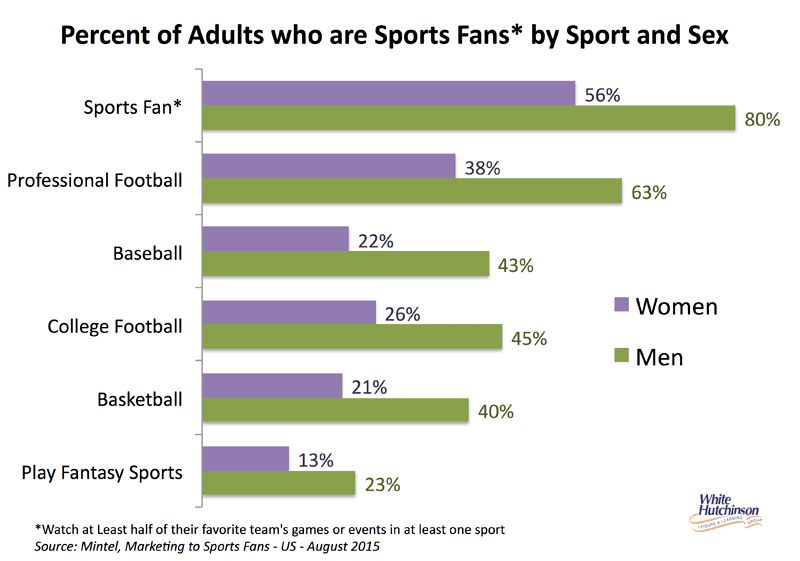
Vol. XV, No. 8, October 2015
The over expansion of sports bars?

It seems like every old style bowling alley that is remodeling to become what the bowling industry labels as a bowling-entertainment center (BEC) with multiple attractions is including a sports bar. We're seeing sports bars pop up in many new entertainment venues as well. Dave & Buster's new centers and their remodels now feature a major sports bar. It's really hard to find a location-based entertainment (LBE) center that doesn't have a sports bar.
As this issue's article, Why serving alcohol is so important, points out, for LBEs to be successful you really need to offer alcohol. However, must it be a sports bar? We don't believe so.
Yes, there is a definite market for sports bars. However, let's look at the percent of adults who are sports fans – adults who watch at least half of their favorite team's games or events in at least one sport.

One thing is instantly noticeable. The green bars for men are much longer than the purple bars for women. The significance of this is that women are far less interested in watching sports on a television at home or at a bar than men. Even if we look at the most popular sport, professional football, the majority of men are sports fans, but slightly over only one-third of women are. What this says is that a sports bar is a very androcentric place with high male appeal but without appeal to the majority of women (unless you are a single woman hunting for a male sports fan to hookup with).
So here's the big issue to consider. Since women make the majority of all buying decisions, including which leisure venues to visit, is a sports bar a turn-off to the majority them? Yes, when a major sports game in going on, the bar may be packed. But at all the other times, do all the televisions showing sports and the strong masculine nature of a sports bar actual result in less business as women choose other options?
P.S. If you're into sports bars, here is a link to check out the 20 most upscale sports bars in the U.S.


